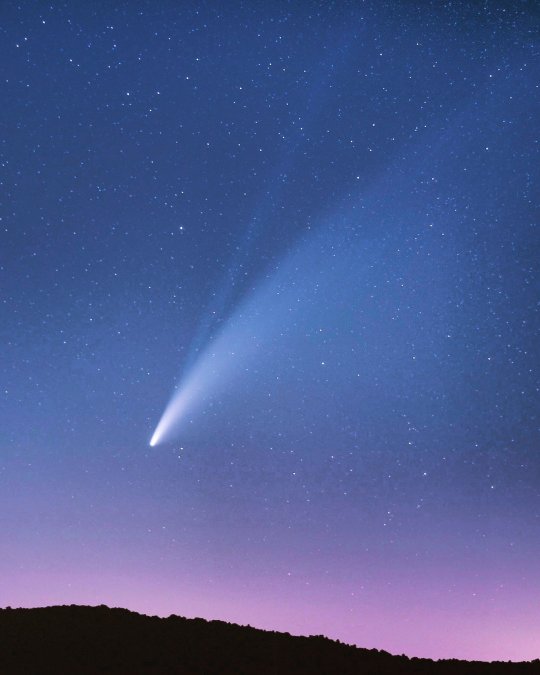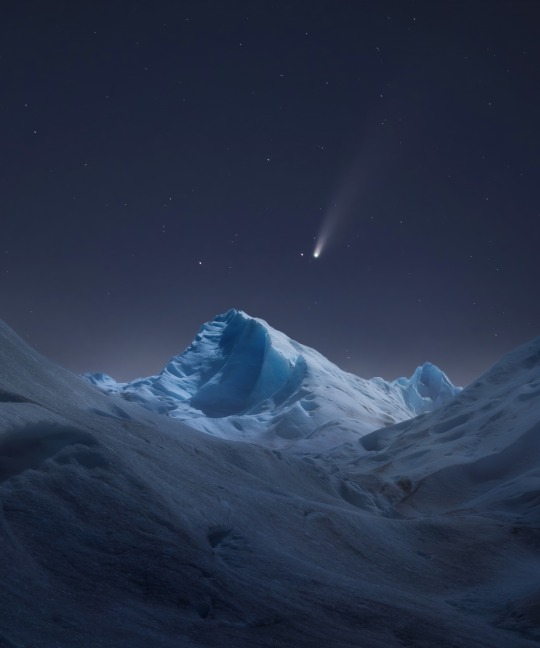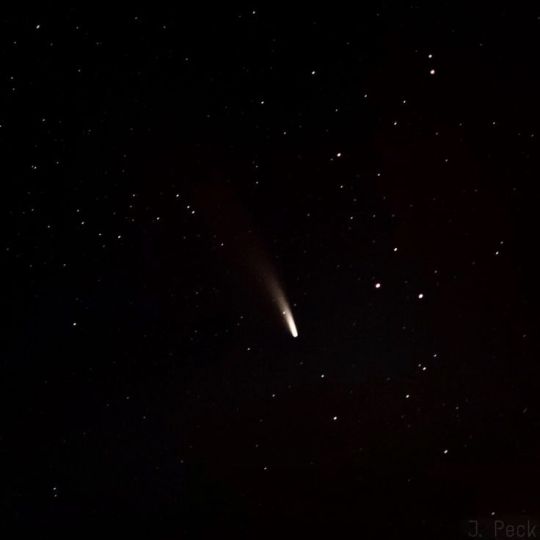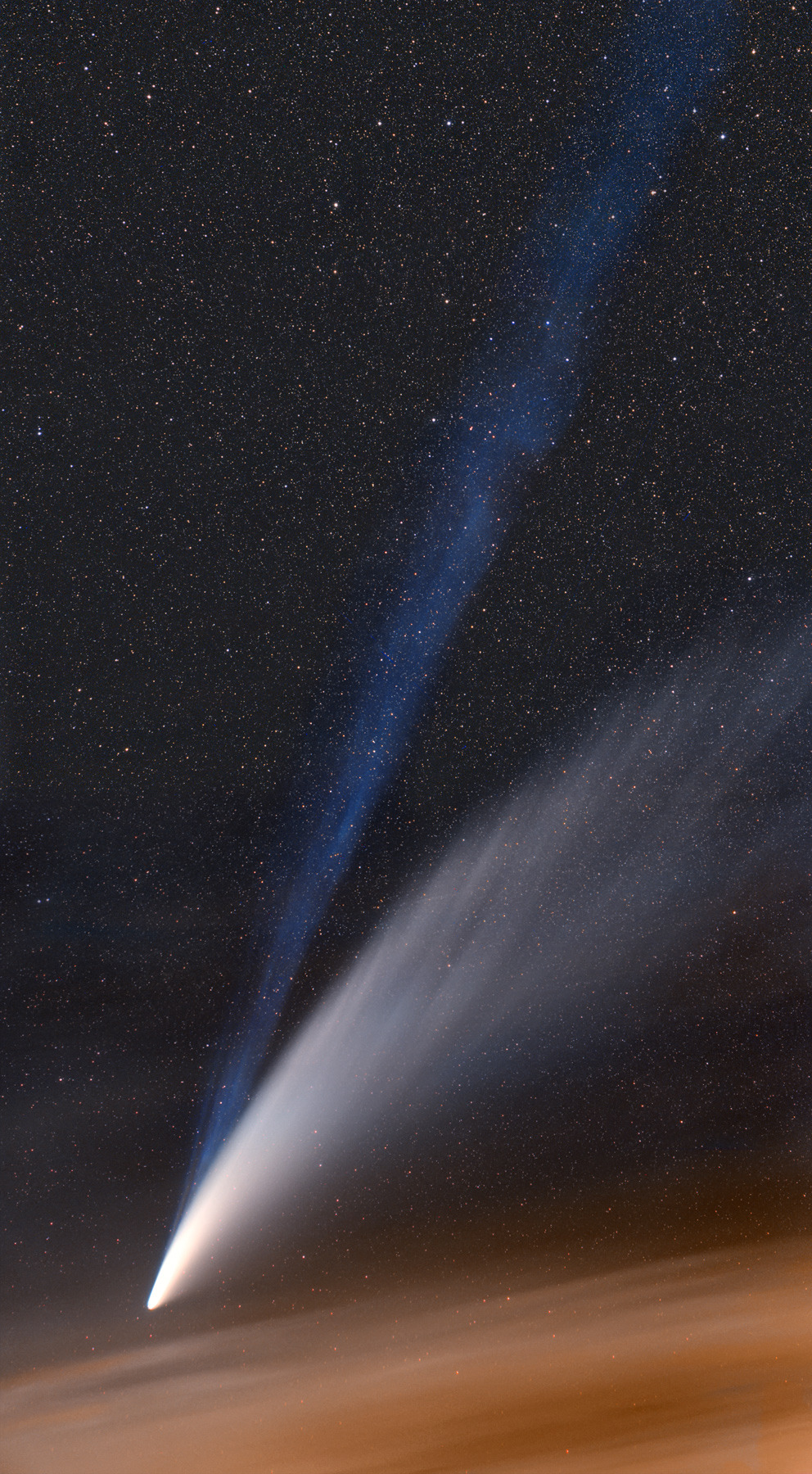#NEOWISE
Text

Double Tails of Comet Neowise
l Aleix Roig l Prades, France l 2020
#comet#neowise#stars#night#sky#astrophotography#astronomy#solar system#planets#galaxy#nasa#space#universe
2K notes
·
View notes
Text
Comet NEOWISE rising over the Earth just before dawn as seen from the International Space Station. ☄️
—
C/2020 F3 (NEOWISE) or Comet NEOWISE is a long period comet with a near-parabolic orbit discovered on 27 March 2020 by astronomers during the NEOWISE mission of the Wide-field Infrared Survey Explorer (WISE) space telescope.
#Comet NEOWISE#C/2020 F3 (NEOWISE)#NEOWISE#Wide-field Infrared Survey Explorer (WISE)#space telescope#comet#International Space Station#Earth#space#astronomy#astronomers
69 notes
·
View notes
Text

Turns out Tux Paint is really good for making more abstract art
Character belongs to @chronomaza. You all should read his book
16 notes
·
View notes
Photo

Title
An Icy Couple
The Perito Moreno Glacier in Patagonia is one of the very few glaciers on Earth that's still growing. It's ice is therefore still fresh and uniquely beautiful. This place is a dream both visually and acoustically. Hearing the ice calving is a truly magical and otherworldly experience - especially at night.
Photographer: Marcel Strelow - Germany
Neutral Density Photography Awards
#marcel strelow#photographer#germany#landscape#neutral density photography awards#perito moreno glacier#glacier#patagonia#ice#night sky#stars#nature#neowise#comet
146 notes
·
View notes
Photo

Comet NEOWISE on July 19, 2020 // José María Moreno Santiago
#astronomy#astrophotography#solar system#oort cloud#comet#icy body#C/2020 F3 (NEOWISE)#Comet NEOWISE#NEOWISE
46 notes
·
View notes
Text

another neowise, now that my computer is working again
character belongs to @chronomaza
28 notes
·
View notes
Photo

Neowise Comet
A post from the wee hours of July 14th 2020:
I just returned home from photographing the Neowise comet. This is a long-period comet that was just discovered on March 27th of this year. If you don’t get a chance to see it, it will come back—in approximately 6,766 years.
This was taken over Grand Traverse Bay, West Arm, north of Traverse City, Michigan—near the end of Old Mission Peninsula.
Image by Richard Koenig; taken July 13th 2020.
#neowise#neowisecomet#nightsky#astrophotography#grandtraversebay#grandtraversecounty#traversecity#puremichigan#westbay
37 notes
·
View notes
Photo

[triumphant music] I finally got a picture of Neowise.
65 notes
·
View notes
Text

1939 mt above the sea level
I remember crying in front of something this beautiful. Everything everywhere was so dark and quiet, there was only me and the comet I could see with my naked eye.
(Comet NEOWISE, discovered in March 2020)
#nature photography#love nature#stargazing#the comet#shooting star#mountains#astro observations#astronomy#night sky#nature photopragpy#night sky photography#neowise#mental health blog#healing#self care
2 notes
·
View notes
Text
Will the bright green comet trigger a Night of the Comet scenario?
Will the bright green comet trigger a Night of the Comet scenario?
Not the actual bright green comet a.k.a. C/2022 E3 (ZTF).
Most people are super excited —and rightly so— about the recent discovery of a new bright green comet. After all, it’s not every day a new comet comes along. And this one is a rare find indeed. Scientists estimate it hasn’t been seen from Earth in 50,000 years.
I, on the other hand, am excited, but also have some reservations. Thanks to…

View On WordPress
7 notes
·
View notes
Video
youtube
NASA Telescope Takes 12-Year Time-Lapse Movie of Entire Sky Pictures of the sky can show us cosmic wonders; movies can bring them to life. Movies from NASA’s NEOWISE space telescope are revealing motion and change across the sky. Every six months, NASA’s Near-Earth Object Wide Field Infrared Survey Explorer, or NEOWISE, spacecraft completes one trip halfway around the Sun, taking images in all directions. Stitched together, those images form an “all-sky” map showing the location and brightness of hundreds of millions of objects. Using 18 all-sky maps produced by the spacecraft (with the 19th and 20th to be released in March 2023), scientists have created what is essentially a time-lapse movie of the sky, revealing changes that span a decade. Each map is a tremendous resource for astronomers, but when viewed in sequence as a time-lapse, they serve as an even stronger resource for trying to better understand the universe. Comparing the maps can reveal distant objects that have changed position or brightness over time, what’s known as time-domain astronomy. “If you go outside and look at the night sky, it might seem like nothing ever changes, but that’s not the case,” said Amy Mainzer, principal investigator for NEOWISE at the University of Arizona in Tucson. “Stars are flaring and exploding. Asteroids are whizzing by. Black holes are tearing stars apart. The universe is a really busy, active place.” NEOWISE was originally a data processing project to retrieve asteroid detections and characteristics from WISE – an observatory launched in 2009 and tasked with scanning the entire sky to find and study objects outside our solar system. The spacecraft used cryogenically cooled detectors that made them sensitive to infrared light. Not visible to the human eye, infrared light is radiated by a plethora of cosmic objects, including cool, nearby stars and some of the most luminous galaxies in the universe. The WISE mission ended in 2011 after the onboard coolant – needed for some infrared observations – ran out, but the spacecraft and some of its infrared detectors were still functional. So in 2013, NASA repurposed it to track asteroids and other near-Earth objects, or NEOs. Both the mission and the spacecraft received a new name: NEOWISE. Growing Wiser Despite the shift, the infrared telescope has continued to scan the sky every six months, and astronomers have continued to use the data to study objects outside our solar system. For example, in 2020, scientists released the second iteration of a project called CatWISE: a catalog of objects from 12 NEOWISE all-sky maps. Researchers use the catalog to study brown dwarfs, a population of objects found throughout the galaxy and lurking in the darkness close to our Sun. Although they form like stars, brown dwarfs don’t accumulate enough mass to kick-start fusion, the process that causes stars to shine. Because of their proximity to Earth, nearby brown dwarfs appear to move faster across the sky compared to more distant stars moving at the same speed. So one way to identify brown dwarfs amid the billions of objects in the catalog is to look for objects that move. A complementary project to CatWISE called Backyard Worlds: Planet 9 invites citizen scientists to sift through NEOWISE data for moving objects that computer searches might have missed. With the original two WISE all-sky maps, scientists found about 200 brown dwarfs within just 65 light-years of our Sun. The additional maps revealed another 60 and doubled the number of known Y-dwarfs, the coldest brown dwarfs. Compared to warmer brown dwarfs, Y-dwarfs may have a stranger story to tell in terms of how they formed and when. These discoveries help illuminate the menagerie of objects in our solar neighborhood. And a more complete count of brown dwarfs close to the Sun tells scientists how efficient star formation is in our galaxy and how early it began. Watching the sky change over more than a decade has also contributed to studies of how stars form. NEOWISE can peer into the dusty blankets swaddling protostars, or balls of hot gas that are well on their way to becoming stars. Over the course of years, protostars flicker and flare as they accumulate more mass from the dust clouds that surround them. Scientists are conducting long-term monitoring of almost 1,000 protostars with NEOWISE to gain insights into the early stages of star formation. NEOWISE’s data has also improved understanding of black holes. The original WISE survey discovered millions of supermassive black holes at the centers of distant galaxies. In a recent study, scientists used NEOWISE data and a technique called echo mapping to measure the size of disks of hot, glowing gas surrounding distant black holes, which are too small and too distant for any telescope to resolve. “We never anticipated that the spacecraft would be operating this long, and I don’t think we could have anticipated the science we’d be able to do with this much data,” said Peter Eisenhardt, an astronomer at NASA’s Jet Propulsion Laboratory and WISE project scientist. More About the Mission NASA's Jet Propulsion Laboratory in Pasadena, California, manages and operates the NEOWISE mission for NASA's Planetary Defense Coordination Office within the Science Mission Directorate in Washington. The principal investigator, Amy Mainzer, is at the University of Arizona. The Space Dynamics Laboratory in Logan, Utah, built the science instrument. Ball Aerospace & Technologies Corp. of Boulder, Colorado, built the spacecraft. Science data processing takes place at IPAC at Caltech in Pasadena. Caltech manages JPL for NASA. JPL managed and operated WISE for NASA's Science Mission Directorate. Edward Wright at UCLA was the principal investigator. The mission was selected competitively under NASA's Explorers Program managed by the agency's Goddard Space Flight Center in Greenbelt, Maryland.
5 notes
·
View notes
Text

This is kaivasita book 1
#kiavasita#kaivasita#ryan macapen#doodles#ryan kaivasita#neowise kaivasita#neowise#kaivasita spoilers#my art
29 notes
·
View notes
Text

Comet Neowise © cosmic_background
#comet#space#comet neowise#astrophotography#stars#night sky#galaxy#astronomy#solar system#planet#cosmos#universe
4K notes
·
View notes
Text

Comet Neowise l Gerald Rhemann
#comet#space#comet neowise#c/2020 f3#astrophotography#astronomy#nasa#solar system#sky#night#stars#galaxy#universe
3K notes
·
View notes
Text
just finished reading Kaivasita
here's a Neowise :)

12 notes
·
View notes
Text

Comet Neowise
2K notes
·
View notes